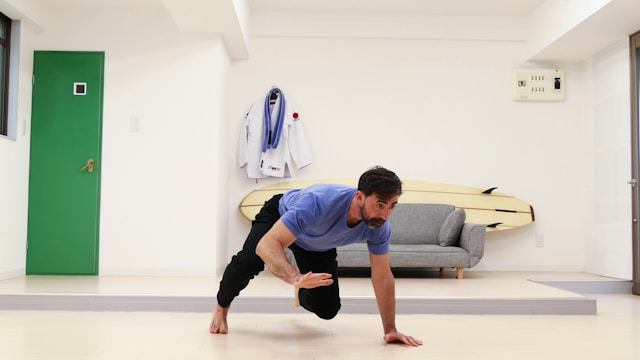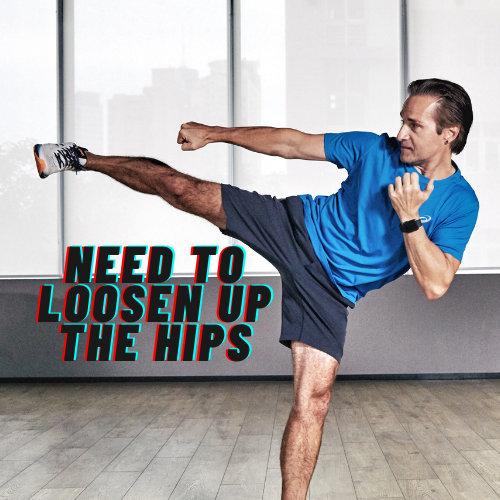Bodyweight: Your Ultimate Training Tool
Any form of exercise will be beneficial for brain health. However, the brain always records how the body moves. There is familiarity when one is doing a push-up or bicep curl. Each movement generates a certain level of stimulus. The greater the stimulus, the more significant the effect of the movement. While the focus of resistance training is building muscle or strength, it often involves simple movements. For example, when doing a seated cable row there are a few adjustments that need to be made when positioning. Feet on the pads, sit upright, and pull the handle towards the abdomen.
Putting perspective on this movement the main focus and demand are pulling as much weight as possible (with proper form of course). In contrast, a one-arm push-up requires significant stability throughout the movement. The entire body receives a stimulus because while lowering and raising the body, other areas work to maintain proper form. This results in a stronger overall stimulus since the body is working synergistically.

Seated Cable Row
Calisthenics
The beauty of calisthenics is that it is not about stagnation. It is about progression since one variation of a movement can be altered to another level. With weight training making progress is somewhat easier by increasing the weight. However, with bodyweight training, there is a nuance there are a plethora of ways to manipulate a standard movement into something else. For example, when doing a pike press exercise a person is in a downward dog position (triangle-like pose) then they do a push-up by trying to maintain the position.
This movement can be made more challenging by elevating the feet, performing it against a wall, or attempting a free handstand push-up.
For each progression it gets difficult, so this provides a greater stimulus. Similar to weight training it is like increasing the weight. With calisthenics one needs to be keen on maintaining their form while doing the exercise. This requires some mind-body awareness since it is easy to compromise form.
Especially doing the free handstand there is much demand to keep balance.
There would have to be sheer focus.
Isn’t There a Hypertrophy Aspect to Calisthenics
Calisthenics utilizes the body as resistance, stimulating the muscles being worked. However, training for skills may not accelerate muscle growth as much ( except the main muscle groups) because skill training focuses on performing movements correctly without reverting to easier variations. This requires a high level of coordination, which consumes mental energy and can fatigue the central nervous system. Over time, the mind and body adapt, making these movements easier.
Exposure To Different Movements
If one is practicing calisthenics or general bodyweight exercising there is a plethora of movements a person can easily transition to. Beyond standard muscle-building exercises like push-up variations and squats, primal movements can enhance the mobility and flexibility of the body.
The point is when moving the body in unfamiliar ways it changes the brain (in a good way). Very much so the act of proprioception has relevance because how the body moves the brain will record those movements. Generally, exposure to new avenues is actually healthy for the brain since the brain and body have to adapt to something new naturally.
This greatly improves the mind-body connection.
If you want to learn about 12 moves that improve weak links check out: The Holistic Edge: Training for Complete Wellness
Primal Movements
Primal movements are not usually incorporated into many people’s routines. However, cognitively there is a benefit to practicing primal exercises. These movements are not advanced so there should not be any limitation (unless the individual is injured or has some physical limitation). Primal exercises do not have much of a hypertrophy aspect but rather strengthen certain areas and increase mobility. The beauty of this is that external resistance is not required, only the body.
With this in mind, there are many dynamic movements to this. Most of these movements mimic how animals move from crawling, jumping, twisting, and others. There is also variation in speed, but when performing them from the beginning a person will have to start off slow to familiarize themselves with the movements.

Does it make you smarter?
As mentioned previously exercise is healthy for the brain. It makes the brain sharp and aware. Because of neuroplasticity, the brain’s structure changes naturally. With the functional, dynamic activity, and balancing element there is a need for the brain to adapt to it. While both weight training and calisthenics stimulate the same brain regions. Whatever exercise is being executed there is a focus on the exercise.
Before performing a skill there is always some form of procedure to perform complex movements.
Preparing to do an advanced variation of an exercise requires some warm-up. Particularly in areas where the muscles are doing much of the work.
For instance, when performing a pistol squat a key area is ankle mobility, strong knees, and hip stability. These are 3 axes that work a squat (generally). Doing some mobility drills and mimicking the movement with assistance can help with the process. So the brain is familiarizing the movement. But of course, it is more so to prevent injury and do the movement properly.
With any calisthenic move mobility and balance are nonnegotiable.
Hybrid Calisthenics
A person can reap the benefits from hybrid calisthenics which is a mixture of weights and bodyweight. While performing advanced variations are challenging enough, adding weight can increase the difficulty. While training for skills does not accelerate growth but by incorporating weight whether it is 5, 10, 15 (pounds), or what seems manageable makes a difference. This will in turn induce muscle growth.
In this case, it is acceptable and safer to do the most basic calisthenics exercise by combining weights together. There would not be too much focus on trying to keep form proper if for example doing a one-arm push up it would be hard to do a number of repetitions and increase the weight. In contrast, a person can do standard push-ups with added weights, allowing them to perform more reps and progressively increase the weights. This approach reduces the effort needed to maintain proper form, as the focus can be more on the movement itself rather than the complexity of advanced variations.
Conclusion
Overall, bodyweight exercises enhance mindfulness. There are so many different ways a person can move with body weight. Whether it’d be doing strength training, primal movements, or doing some form of stretch. The brain is recording how the individual positions their body or moves. With practice, a person can master and control diverse movements. Best of all no equipment is needed to perform these moves unless needing to do pull-ups. However if there is a need to incorporate resistance there would be no problem in doing so. Taking the hybrid can be advantageous when wanting to add some density to the body. Practicing a skill will surely induce mental growth.
If you found this post helpful. Please consider sharing and subscribing!






